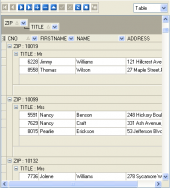MaxDB Maestro online Help
| Prev | Return to chapter overview | Next |
Editing function properties
The Definition field contains the definition of the function. Specify a string constant defining the function here; the meaning depends on the language. It may be an internal function name, the path to an object file, an SQL command or text in a procedural language.

Name
You can edit the function name here. The name of the function must be unique among all the function names in the database.
Owner
Set the owner for the function in this field. By default, only the owner of an object can perform various operations with the object. In order to allow other users to operate it, privileges must be granted. (However, users that have the superuser attribute can always access any object.)
Comment
Specify a comment to the function if necessary.
Create Date
Displays the date when the UDF was created.
Return Cursor
If checked, a database function is defined that returns a results table when called.
To apply the changes, select the Apply Changes item in the Navigation bar or use Ctrl+F9 or Ctrl+F7 shortcut keys.
It is also possible to modify object properties without opening the object editor: use the Object Properties item of the popup menu of the selected object from the explorer tree.
| Prev | Return to chapter overview | Next |




 Download
Download Buy
Buy

